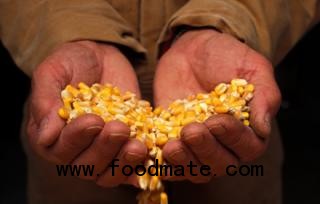
In its Quarterly Grain Stocks and Small Grains Summary Reports Friday, the USDA lowered the amount of corn and soybeans on-hand as of Sept. 1.
Minutes after the report's release at 7:30am CT, the CME Group's electronic corn trade jumped 21 cents, wheat 18 cents and soybeans up 2 cents.
For corn, the USDA pegged stocks at 988 million bushels, compared to the average trade estimate of 1.126 billion bushels and the USDA's June 1 estimate of 3.149 billion bushels.
The USDA sees U.S. soybean inventory at 169 million bushels vs. the average trade estimate of 132 million bushels and 215 million bushels at this same time a year ago.
For wheat stocks, the USDA pegged U.S. inventory, as of Sept. 1, at 2.10 billion bushels, compared to the average trade analysts estimate of 2.281 billion bushels.
REACTION
Jason Ward, Northstar Commodity Investment Co. analyst says the report is surprisingly bearish to the soybeans at 169 million bushels.
"Corn was bullish and may stop the bleeding to the downside. The report is friendly for wheat," Ward says.
Ward adds, "Thankfully, they (USDA) found more soybeans, because China is buying more than we have to sell. So, this is just some more that we can sell."
Overall, this report should put in some sort of bottom on the corn, Ward says.
Sal Gilbertie, Teucrium Trading, Inc. says demand for crops seems to be the highlight of today’s report.
"The soybean numbers are most significant, disappearance last quarter indicates healthy demand at the end of the 2012 crop year, even with historically record high prices," Gilbertie says.
Soybean stocks, at September 1, were slightly higher than the trade expected, but demand is clearly unabated and the soybean balance sheet is very tight, he says.
Jack Scoville, PRICE Futures Group vice-president, says the report is very bullish corn. "With USDA placing stocks under one million, and variable yields implies a much more tight situation moving forward," Scoville says. "Wheat production dead on, but stocks down. This implies corn feed use was much higher than people were estimating. We should find out part of that tonight with the Hogs and Pigs report."
For soybeans, even though the report was bearish to expectations, stocks remain tight. So, down side should be limited," Scoville says.





